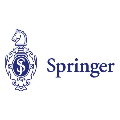Due to the explosive growth in the number of wireless devices and diverse wireless services, such as virtual/augmented reality and Internet-of-Everything, next generation wireless networks face unprecedented challenges caused by heterogeneous data traffic, massive connectivity, and ultra-high bandwidth efficiency and ultra-low latency requirements. To address these challenges, advanced multiple access schemes are expected to be developed, namely next generation multiple access (NGMA), which are capable of supporting massive numbers of users in a more resource- and complexity-efficient manner than existing multiple access schemes. As the research on NGMA is in a very early stage, in this paper, we explore the evolution of NGMA with a particular focus on non-orthogonal multiple access (NOMA), i.e., the transition from NOMA to NGMA. In particular, we first review the fundamental capacity limits of NOMA, elaborate the new requirements for NGMA, and discuss several possible candidate techniques. Moreover, given the high compatibility and flexibility of NOMA, we provide an overview of current research efforts on multi-antenna techniques for NOMA, promising future application scenarios of NOMA, and the interplay between NOMA and other emerging physical layer techniques. Furthermore, we discuss advanced mathematical tools for facilitating the design of NOMA communication systems, including conventional optimization approaches and new machine learning techniques. Next, we propose a unified framework for NGMA based on multiple antennas and NOMA, where both downlink and uplink transmission are considered, thus setting the foundation for this emerging research area. Finally, several practical implementation challenges for NGMA are highlighted as motivation for future work.
翻译:由于无线装置和多种无线服务(如虚拟/强化现实和一切互联网)的数量爆炸性增长,下一代无线网络面临不同数据流量、大规模连通、超高带宽效率和超低潜线要求带来的前所未有的挑战。为了应对这些挑战,预计将制定先进的多种接入计划,即下一代多接入(NGMA),这种计划能够以比现有多种接入计划更具资源和复杂性的方式支持大量用户。此外,鉴于NOMA的高度兼容性和灵活性,我们在本论文中着重介绍了关于NGMA的多种技术的当前研究基础,特别侧重于非横向多重访问(NOMA),即从NOMA向NGMA的过渡。特别是,我们首先审查NOMA的基本能力限度,阐述NGMA的新要求,并讨论若干可能的候选技术。此外,鉴于NOMA的高度兼容性和灵活性,我们探讨目前对NOMA多种安技术的研究基础的研究基础,有希望的将来应用设想,因此NOMA的今后应用情景将特别侧重于从NOMA的多端访问(NOMA)进入,并讨论正在使用的数学领域,因此,为IM的今后设计中的新技术的升级技术,我们正在讨论的数学系统。




